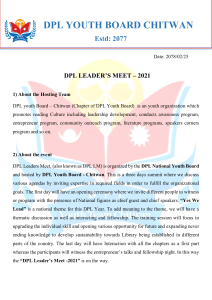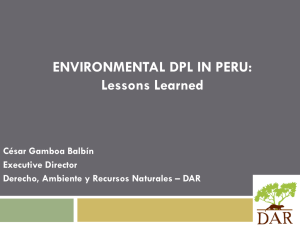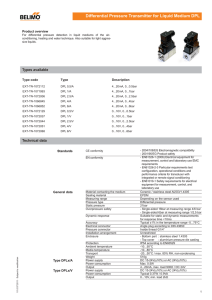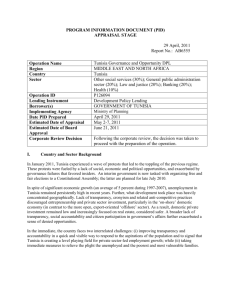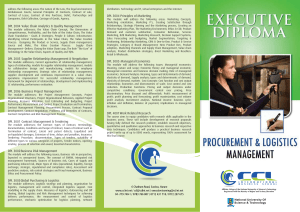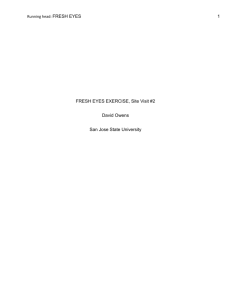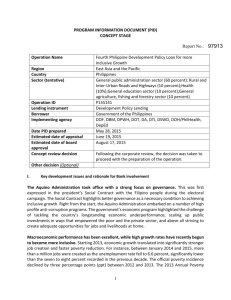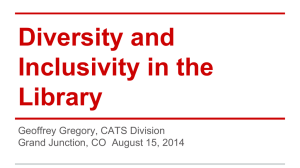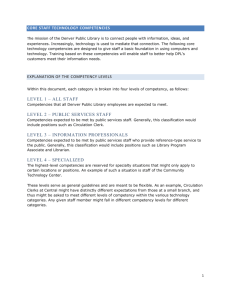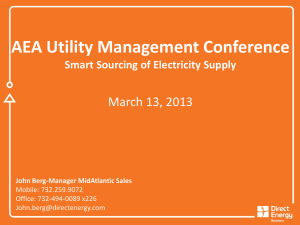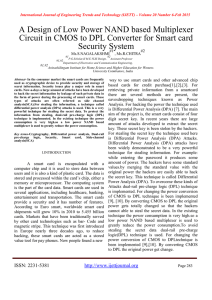Japan*s Timber Legality System: New Directions?
advertisement
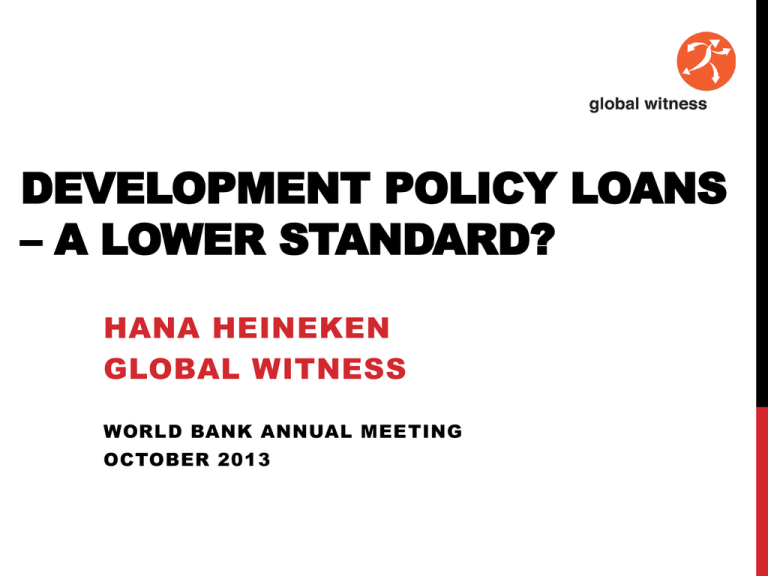
DEVELOPMENT POLICY LOANS – A LOWER STANDARD? HANA HEINEKEN GLOBAL WITNESS WORLD BANK ANNUAL MEETING OCTOBER 2013 OUTLINE 1. Profile of DPLs in the WBG portfolio 2. DPL Policy Framework 3. Key concerns 4. Recommendations 5. DPLs in the Safeguard Review DPLs vs Total World Bank Lending DPL share of total Bank Commitments, FY 95-12 Source: 2012 DPL Retrospective DPL POLICY FRAMEWORK OP 8.60 Para. 3. Lending Criteria and Selectivity. The Bank considers borrower’s - Policy and institutional framework - commitment to and ownership of the DPL program; - institutional capacity and ability to implement. Para. 9 - Analytical Underpinnings “A development policy operation draws on relevant analytic work on the country undertaken by the Bank, the country, and third parties….” DPL POLICY FRAMEWORK Para. 10 & 11: Social & Environmental Impacts The Bank must: 1. Assess whether specific country policies supported by the operation are likely to cause 1. significant poverty and social consequences; or 2. significant effects on the country’s environment, forests, and other natural resources; 2. Assess the borrower’s systems for reducing such adverse effects and enhancing positive effects; 3. Describe in PD how to address analytical gaps or shortcomings in borrow systems before or during program implementation. DPLs and Governance Risks CPIA “Cluster D” Criteria – Public Sector management and Institutions • Property Rights and Rulebased Governance • Quality of Budgetary and Financial Management • Efficiency of Revenue Mobilization • Quality of Public Administration • Transparency, Accountability, and Corruption in the Public Sector Source: 2012 DPL Retrospective DPL POLICY FRAMEWORK Para. 8 - Development Objectives “The program design includes measurable indicators for monitoring progress during implementation and evaluating outcomes on completion.” Para. 16 - Implementation Monitoring & Evaluation - Borrower responsibility: Implementation and M&E - Bank responsibility: assessing and monitoring adequacy of country’s M&E arrangements REASONS FOR CONCERN Reason # 1: Inadequate Risk Assessment Case Study: DRC Forest Sector DPL (TSERO) - $90 million DPL approved in 2005 - 15% of program for reforming logging concession system - Bank’s risk assessment: “no significant social or environmental effects” Inspection Panel concluded: - “the system for determining whether there will be significant effects on the environment and natural resources is flawed.” - analysis of DRC’s systems for reducing adverse effects would have found such systems “were non-existent or extremely debilitated and ineffective.” REASONS FOR CONCERN Reason #2: No requirement to consult; little opportunity for accountability - OP 8.60 para. 6 – Consultation and Participation “The Bank advises borrowing countries to consult with and engage participation of key stakeholders in the country in the process of formulating the country’s development strategies…” No explicit requirement to consult on the DPL itself. - Accountability Limited by 1) Fast disbursing characteristic; 2) potential for long term, indirect impacts. REASONS FOR CONCERN Reason # 3: Potential for far reaching, long-term impacts but inadequate monitoring of negative impacts: Example: forest sector DPLs ““[a]ny concession policy that the World Bank supports will have an asset transformation effect—that transforms the value of forests assets and the access that forest-dependent people will have to them. But development policy operations do not require the same level of risk assessment or mitigation systems as investment operations do under the Bank‘s safeguard system.” Source: IEG 2013 Evaluation of World Bank Forest Strategy RECOMMENDATIONS 1) Base the DPL on a CAS that has been properly assessed for risk (i.e. using a SESA) 2) Better risk assessment categorizing risk based on: 1) Distribution of costs and benefits 2) Implementation capacity 3) Association with Cat. A sub-projects 4) Existence of environmental or social conflict 3) Enhanced, formalized scrutiny of High-risk DPLs based on Envt’l and Social Assessments prior to appraisal, consultation akin to OP 4.01, and a SESA for prior actions 4) More robust M&E, including in the long-term 5) More effective grievance response mechanisms WHY DPLS BELONG IN THE SAFEGUARD REVIEW a. So far no thorough review and evaluation of DPL policy: Retrospective is not the answer - Desk-based review - Example: Indonesian infrastructure DPL WHY DPLS BELONG IN THE SAFEGUARD REVIEW b. Opportunity to assess the policy based on comprehensive consultations, cost -effectively. c. Consistent with aim of Safeguard review of enhancing development outcomes –helps to ensure coherence in outcomes. d. Precedence exists with other IFIs e. Civil society is asking for it THANK YOU! CONTACT: HANA HEINEKEN HHEINEKEN@GLOBALWITNESS.ORG
